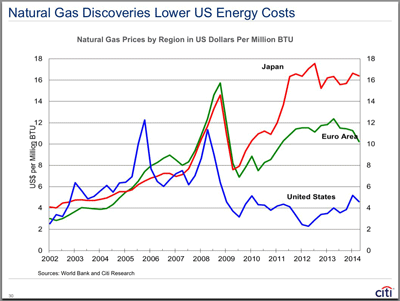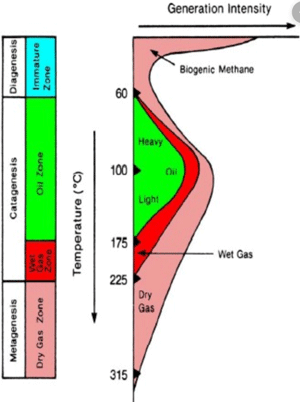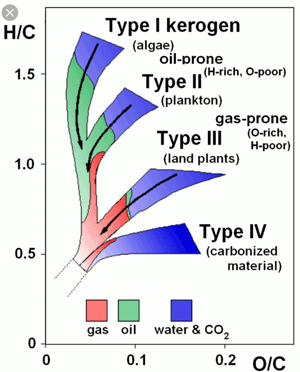>Top 4. From strategic materials to commodities:
- Strategic materials:
- Oil had been considered as a strategic material after the Oil Shock, particularly the supply volume had been controlled by OPEC.
- The future market has started from latter half of 1980s; oil became a commodity no less than wheat or sugar, or other metal resources.
- Oil is a commodity in peace time, but it changes to a strategic material in war time.
- Oil became a strategic material:
- 1903; the first flight by Wright brothers.
- In 1914, WWI provoked airplanes as a military force, changing drastically fighting scenes.
- French prime minister Georges Clemenceau said, 'A drop of oil is a drop of blood.'
- German general Lommel was defeated at the battle in north Africa due to lack of oil.
- Japan was defeated in the continual batters in WWII due to lack of oil.
- History of oil development & usage:
- >Top In 1859, Edwin Drake firstly succeeded to dig oil in Pennsylvania.
- In 1911, UK Churchill, then UK navy minister, changed fuel for warship from coal to oil, drastically decreased supply staff.
- in 1940, US shares 63% of world oil production, and won WWII by oil.
- In 1950s-70s, Seven Sisters {Exxon (Standard Oil NJ), Mobil (Standard Oil NY), Chevron (Standard Oil Cal.), Taxaco, Gulf, BP (Anglo Persia), Royal Dutch Shell}
- Seven Sisters shares 65% of world oil reserves, 55% of oil production, and 57% of refined oil.; except US and USSR, whose shares 92% of world oil reserves, 88% of oil production, and 77% of refined oil.
- Conflict of oil producing countries and Seven Sisters:
- Oil producing countries and Seven Sisters agreed to halve the profit of oil; but the latter had the risk of price fluctuations.
- Discovery of new oil deposits in ME and increase of oil supply from USSR affected to decline the price of oil declined below the declared price.
- Seven Sisters tried to pulling down the declared price, which oil producing countries resisted.
- >Top In 1960/9, OPEC was organized by Saudi Arabia, Kuwait, Iraq, Iran, and Venezuela.
- In 1973/10, Arab-Israel War IV;
- In 1973: the Oil Shock-I; oil price jumped from 3.01/bblto5.12/bbl, then to $11.65/bbl (4 times in 3 months)
- In 1979: the Oil Shock-II; oil price became around $30/bbl
- Reverse Oil Shock: due to failure of production adjustment, oil price became less than $10/bbl.
- Price control shifted from OPEC to the market.
- >Top Oil Future Market:
- Oil price had been decided by 1) Seven Sisters, then 2) OPEC, now has been by 3) market
- There is no 'what it should be price' of oil.
- 1983/5: NYMEX (NY Mercantile Exchange) oil transaction based on WTI (West Texas Intermediate) oil; unit 1000 bbl, $ base; trade volume in 2010; 463M bbl/d
- 1988: IPE (International Petroleum Exchange; now ICE Futures, Intercontinental) in London, unit 1000 bbl, $ base; trade volume 274M bbl/d
- 2001, TCE (Tokyo Commodity Exchange for Industry); unit KL (=315 bbl), ¥ base; trade volume 0.81M bbl/d
- 2007: DME (Dubai Mercantile Exchange); unit 1000 bbl, $ base; trade volume 0.85M bbl/d
- Oil Broker of future (2-3months) transactions: online brokerage determining 1) delivery month & price, 2) quantity, 3) quality, 4) delivery place, 5) payment condition, etc.
- OPEC, Saudi Arabia:
- In 1976, Aramco (Exxon, Mobil, Texaco, Chevron) assigned its share to Saudi Arabia.
- In 1989, Saudi Aramco 100% owned.
- In 1974, OECD established IEA (International Energy Agency) as a sub-organization to respond in emergent cases. (stockpile and emergent supply of oil)
- Time lag in oil development:
- It usually takes 5-10 years from discovery to development of oil & gas.
- If the market is observed as over supply, not only operating oil production could to be easily stopped but also development projects could not be easily stopped.
- >Top 'Point Forward' thinking: neglect the sunk cost.
- <Case>:
- 5BhadspenttoacquiretheminingrightandF/Sestimatedthetotalinvestmentof10B, the total profit will be $30B.
- During the process, further 10B(totally15B) of investment will be needed, and the total profit will be downward revised to $12B. What should you do?
- The revised F/R will be 12Breturnagainst15B investment (5Bisalreadysunkcost),comparedtotheoriginal30B return against $10B investment.
- Point Forward thinking:
12returnagainst10B more investment looks better than simple $5B sunk cost.
- Oil Trading:
- Precondition: Monthly production 20K bbl/d =600K bbl/m; 1cargo=600K bbl
- Selling 21 cargos, and buying back 20 cargos in a certain month.
- Liquidity and a certain kind of incentives (saving tax, settlement of differences) are essential in the future market.
- Japanese oil industry:
- is weak in upper stream, concentration downstream (refinery, logistics, and sales)
- in 1961, JPDA (Japan Petroleum Development Association) was established by four companies (Arabian Oil, Teikoku Oil, JAPEX, and NPDO)
- In 1967, Japan Petroleum Development Corp. (now JOGMEC) was established.
- Japanese Primary Energy share:
-
| Share % |
Oil |
Gas |
Coal |
Nuclear |
Hydro |
Renewable |
| 2010 |
40.2 |
17.0 |
24.7 |
13.2 |
3.9 |
1.0 |
| 2014 |
44.1 |
22.2 |
27.1 |
0.7 |
3.9 |
2.0 |
| World av. |
32.9 |
23.7 |
30.1 |
4.4 |
6.7 |
2.2 |
| |
|
|
|
|
|
|
- Gas:
world production 3.39T sq.m (=3.06B ton oil equivalent);
- about 30% of which is exported: 70% transported by pipeline, 30% by LGN
- Gas is not a product easily and quickly transported material:
- IEA enforces member countries to have 90 days stockpile, but no instruction about Gas stockpile.
- Oil is considered as a strategic resource:
- 45% of crude oil or 64% of refined oil is transported to foreign countries;
- and 43% of oil production or 56% of oil reserves is located in politically unstable ME and Africa.
|
4. 戦略物質から商品へ:
- 1969; Import of LNG started:
- melting point: -162ºC; volume 1/600 of its liquid; 87M ton.
- if it evapolate gas above -113ºC, the density will be lighter than air, and spread out.
|


